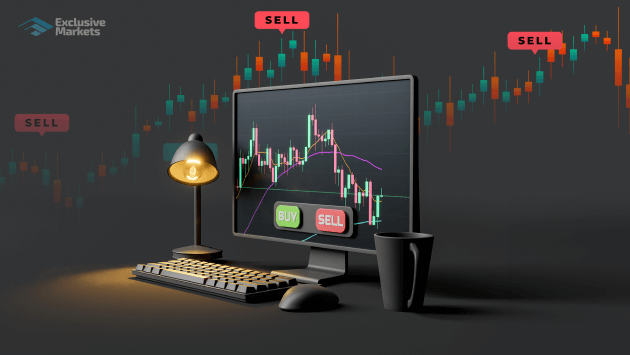
The Ultimate Guide to Forex Currency Trading Online
Forex currency trading online has become increasingly popular among individual traders and institutions alike. The advantage of this market lies in its accessibility; anyone with an internet connection can participate. However, as appealing as it is, trading forex successfully requires knowledge, skill, and strategy. In this article, we delve into the core components of forex trading, touching on strategies, risk management, and necessary resources such as forex currency trading online Best Trading Apps that can enhance your trading experience.
Understanding Forex Trading
Forex, or foreign exchange, refers to the global marketplace for trading national currencies against one another. It is the largest financial market in the world, with a daily trading volume exceeding $6 trillion. Currency trading occurs in pairs, such as EUR/USD or GBP/JPY, where you buy one currency while simultaneously selling another.
The Structure of the Forex Market
The forex market operates 24 hours a day, five days a week, across various time zones. This means that currency prices fluctuate continuously due to factors such as economic data, political events, and market speculation. Understanding these elements is crucial for traders to make informed decisions.
Getting Started with Forex Trading
To begin trading forex online, you need to follow several steps:
- Educate Yourself: Familiarize yourself with trading concepts, strategies, and the mechanics of the market.
- Select a Broker: Choose a reputable forex broker that suits your trading style and offers a user-friendly platform.
- Create a Trading Account: Sign up with your selected broker and deposit funds to start trading.
- Develop a Trading Plan: Establish your trading goals, risk tolerance, and strategies for entering and exiting trades.
- Practice with a Demo Account: Before committing real money, practice trading with a demo account to build your skills.
Forex Trading Strategies
Successful forex trading often involves using specific strategies. Here are a few common approaches:
1. Day Trading
Day trading involves opening and closing trades within the same day. Traders seek to capitalize on short-term price movements. This strategy requires a keen understanding of market trends and often involves technical analysis.
2. Swing Trading
Swing traders hold positions for several days or weeks to benefit from price swings. This strategy typically involves a mix of technical and fundamental analysis to identify potential entry and exit points.
3. Scalping
Scalping is a high-frequency trading method where traders aim for small price changes over short periods. It requires quick decision-making and an ability to execute trades rapidly.
4. Position Trading

Position trading is a long-term strategy where traders hold onto positions for weeks or months, focusing on longer-term market trends. This strategy often relies heavily on fundamental analysis.
Risk Management in Forex Trading
Effective risk management is critical in forex trading. Here are some essential practices:
- Use Stop Losses: Set stop-loss orders to limit potential losses on trades.
- Determine Position Size: Use a position sizing calculator to determine the appropriate lot size based on your risk tolerance and account balance.
- Diversify Your Portfolio: Spread your investments across different currency pairs to mitigate risks.
- Keep Emotions in Check: Emotional decision-making can lead to losses, so it is crucial to stick to your trading plan.
The Role of Technology in Forex Trading
Technology plays a pivotal role in the evolution of forex trading. Here are key technological advancements:
Automated Trading Systems
Automated trading systems, or trading bots, use algorithms to execute trades based on pre-set criteria. These systems can analyze vast amounts of data and respond swiftly to market changes.
Mobile Trading Applications
Mobile trading apps enable traders to monitor and execute trades from anywhere, enhancing convenience and flexibility. With the proliferation of smartphones, the forex market has become even more accessible.
Technical Analysis Tools
Various analytical tools assist traders in making informed decisions. Charting software, indicators, and market news apps provide insights into market trends and potential trading opportunities.
Common Mistakes to Avoid in Forex Trading
Even experienced traders can make mistakes. Here are common pitfalls to watch out for:
- Over-Leveraging: Using excessive leverage can lead to significant losses.
- Lack of a Trading Plan: Trading without a clear strategy can result in impulsive decisions.
- Ignoring Economic Indicators: Economic reports can heavily influence currency prices, and ignoring them can be detrimental.
- Chasing Losses: Trying to recover losses through reckless trading often leads to more significant financial setbacks.
The Future of Forex Trading
The future of forex trading looks promising with advancements in technology and accessibility. As artificial intelligence, machine learning, and big data analytics continue to evolve, traders will have more tools and insights at their disposal. However, the fundamental principles of trading—education, discipline, and risk management—will remain paramount.
Conclusion
Forex currency trading online offers potential rewards, but it comes with risks. As you embark on your trading journey, focus on education, develop a solid trading plan, and utilize the right tools, such as the Best Trading Apps, to maximize your chances of success. Stay informed, practice risk management, and remember that patience and discipline are key in the fast-paced world of forex trading.
发表回复